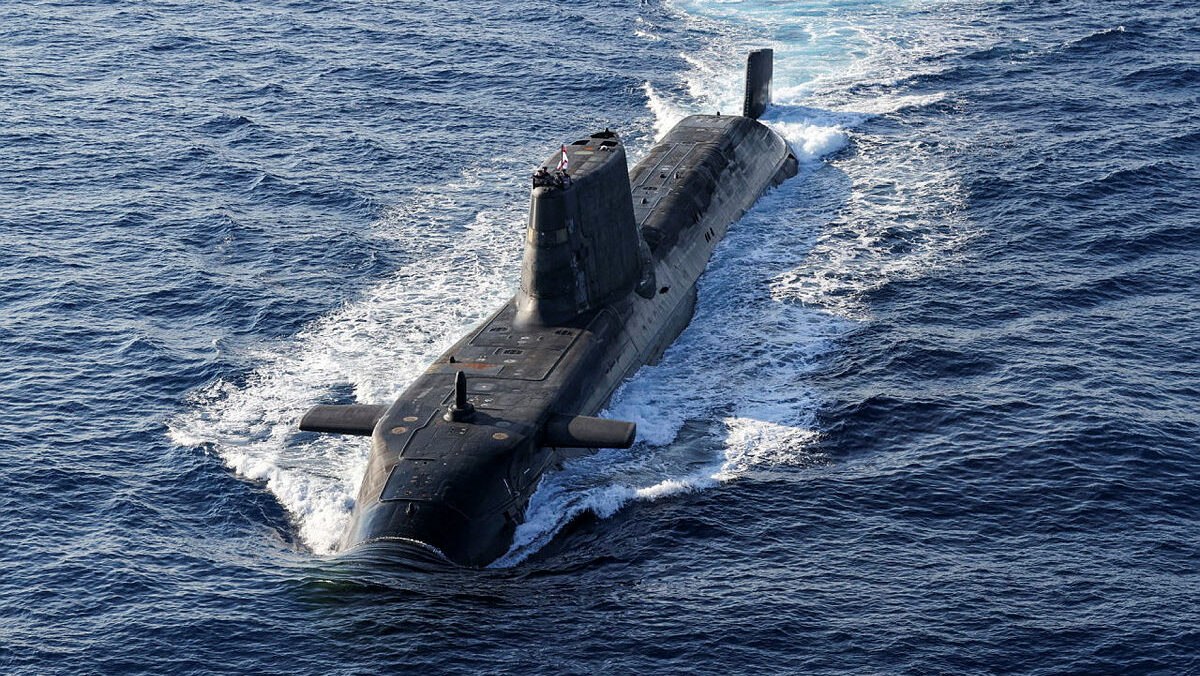
The UK says it is “nearing completion” of a fleet of nuclear powered Astute class submarines (UK MoD)
BELFAST — Britain’s new nuclear warhead program has been dubbed the A21/Mk7 or Astraea, a national nuclear deterrent strategy revealed for the first time today.
The future warhead to replace submarine-launched Trident systems will be developed as a “sovereign” capability and “in parallel” with the US W93/Mk7 warhead, according to the Defence Nuclear Enterprise Command Paper.
The document did not disclose a cost estimate for the Replacement Warhead program or a timeline for entry to service, though the UK has previously said the weapon system will be “available” in the 2030s. It is also unclear if a final design for the A21/Mk7 warhead has been approved. US budget documents state the W93 has not yet developed a complete design definition,” so if the two are being developed in parallel it is likely the A21 is still in early design mode. (Flight tests for the W93 are slated for the 2027-2029 timeframe, per the budget documents.)
London first announced the Replacement Warhead program in February 2020 and later said that “requirements, design and manufacture” of the weapons will “meet our obligations under the Treaty on the Non-Proliferation of Nuclear Weapons.” [PDF]
The decision to validate warhead design features and capabilities without carrying out underground tests is in keeping with a voluntary British “moratorium” on nuclear weapon explosions. The Atomic Weapons Establishment (AWE), the UK’s nuclear weapons manufacturing and research organization, will instead rely on simulation, modelling, supercomputers and lasers to develop Astraea, noted the deterrence document, which falls in line with how the US has digitally designed and tested new nuclear weapons for years.
A 2022 report from the Nuclear Information Service, a British research body, said that the future warhead “will be housed in the Mk7 re-entry body, supplied by the US, and is almost certain to incorporate technologies being developed under the JTD [Joint Technology Demonstrator] project to increase safety and security.”
The report also stated that the Mk7 “planning estimate cost” amounts to a total of $15.5 billion, which could rise as design of the warhead matures. US-UK nuclear demonstration warhead activities stretch back as far as 2016, aligned to the JTD effort, said the Nuclear Information Service.
The UK operates a policy of “continuous at sea deterrence” meaning its nuclear strike capability is singular in nature or submarine based only, as opposed to the deployment of ground or air launched weapon systems, like other nuclear powers.
The UK parliamentary library states that the UK has a nuclear stockpile “ceiling” of 260 warheads but an exact figure is “unclear.” A 2023 estimate from the US-based Federation of American Scientists puts the UK total at 225 warheads, of which 120 are believed to be deployed.
Elsewhere in the new nuclear deterrence strategy, London says it is committed to delivering “new facilities with advanced manufacturing capabilities” at the two British sites leading the design and development effort for the new SSN-AUKUS class of submarines.
BAE Systems’ Barrow-in-Furness shipyard, located in northern England, will receive funding of £200 million ($252 million) over the next 10 years, while Rolls Royce’s site in Derby, England, set to build nuclear reactor plants for the Australian attack submarines, will also receive unspecified funding. The money for both manufacturers will come from a £3 billion ($3.8 billion) package originally announced under the UK’s Integrated Review Refresh defense policy.
BAE and Australia’s ASC Pty Ltd were named as the first main contractors of the future Australian submarines last week.
The UK also said it is “nearing completion” of conventionally armed, nuclear powered Astute-class submarines. London will also invest £31 billion ($39 billion) to build and deliver Dreadnought-class ballistic missile submarines (SSBN) “with the first boat due on patrol in the early 2030s,” added the nuclear strategy document.
France, Germany ink deal on way ahead for ‘completely new’ future European tank
Defense ministers from both countries hailed progress on industrial workshare for a project that they say “will be a real technological breakthrough in ground combat systems.”

























